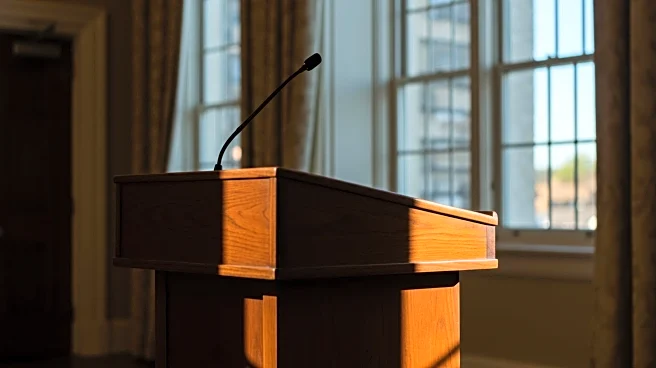What's Happening?
Gold prices have decreased as investors await the Federal Reserve's annual symposium in Jackson Hole, Wyoming, where Chair Jerome Powell is expected to speak on the economic outlook and policy framework. Spot gold fell 0.4% to $3,317.71 per ounce, marking its lowest level since August 1. U.S. gold futures for December delivery also settled 0.6% lower at $3,358.7. The dollar index remained steady, while benchmark 10-year yields slipped. Analysts suggest that traders are positioning in the futures market ahead of Powell's speech, which could influence gold and silver prices depending on the tone of his remarks.
Why It's Important?
The Federal Reserve's symposium is a significant event for financial markets, as it may provide insights into future monetary policy decisions. A dovish stance from Powell could be favorable for gold prices, which typically perform well in low-interest rate environments. The anticipation of a potential rate cut in September, with traders seeing an 85% chance of a 25-basis-point reduction, adds to the market's focus on the Fed's actions. Additionally, UBS has raised its gold price target for March 2026, citing persistent U.S. macroeconomic risks and strong investment demand, indicating the broader economic implications of the Fed's policy decisions.
What's Next?
The release of the Federal Reserve's July meeting minutes is expected to provide further clarity on the U.S. economic outlook. Investors will closely monitor Powell's speech for any indications of future rate cuts or changes in the Fed's policy framework. The market's response to these developments could impact gold prices and broader financial markets. President Trump has urged the Fed to pursue deeper rate cuts, which could influence the central bank's decisions and subsequently affect economic conditions.
Beyond the Headlines
The Federal Reserve's policy decisions have far-reaching implications, not only for financial markets but also for global economic stability. The anticipation surrounding the Jackson Hole symposium highlights the interconnectedness of monetary policy and international economic dynamics. As the U.S. dollar's role in global trade and investment comes under scrutiny, shifts in Fed policy could have long-term effects on currency markets and international trade relations.











